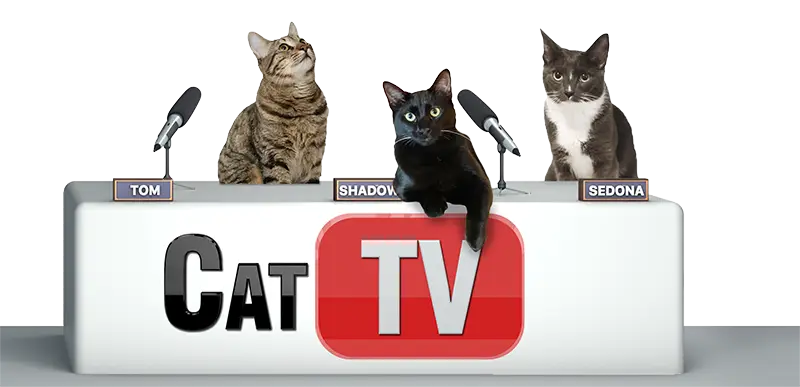Why does your cat parade around, cat meowing with toy in mouth? This intriguing behavior is part communication, part instinct, and it can be a sign of a variety of needs and desires. From wanting your attention to displaying their natural hunting prowess, there’s depth to this seemingly adorable action. Join us in uncovering the reasons behind what your cat could be attempting to express.
Cat Meowing With Toy in Mouth: Key Takeaways
Cats carrying toys and meowing often seek attention and affection, signaling either a desire for playtime, interaction, or even cuddles instead of just engaging with their toys.
This behavior also showcases a cat’s instinctual side, reflecting both their hunting instincts and sometimes a motherly or teaching role, since domestic cats retain these natural behaviors despite being far removed from the wild.
Regular interactive playtime not just entertains cats but also strengthens the bond between them and their owners, supporting their physical health and mental well-being, plus can help in dealing with excessive meowing.
Seeking Attention and Affection
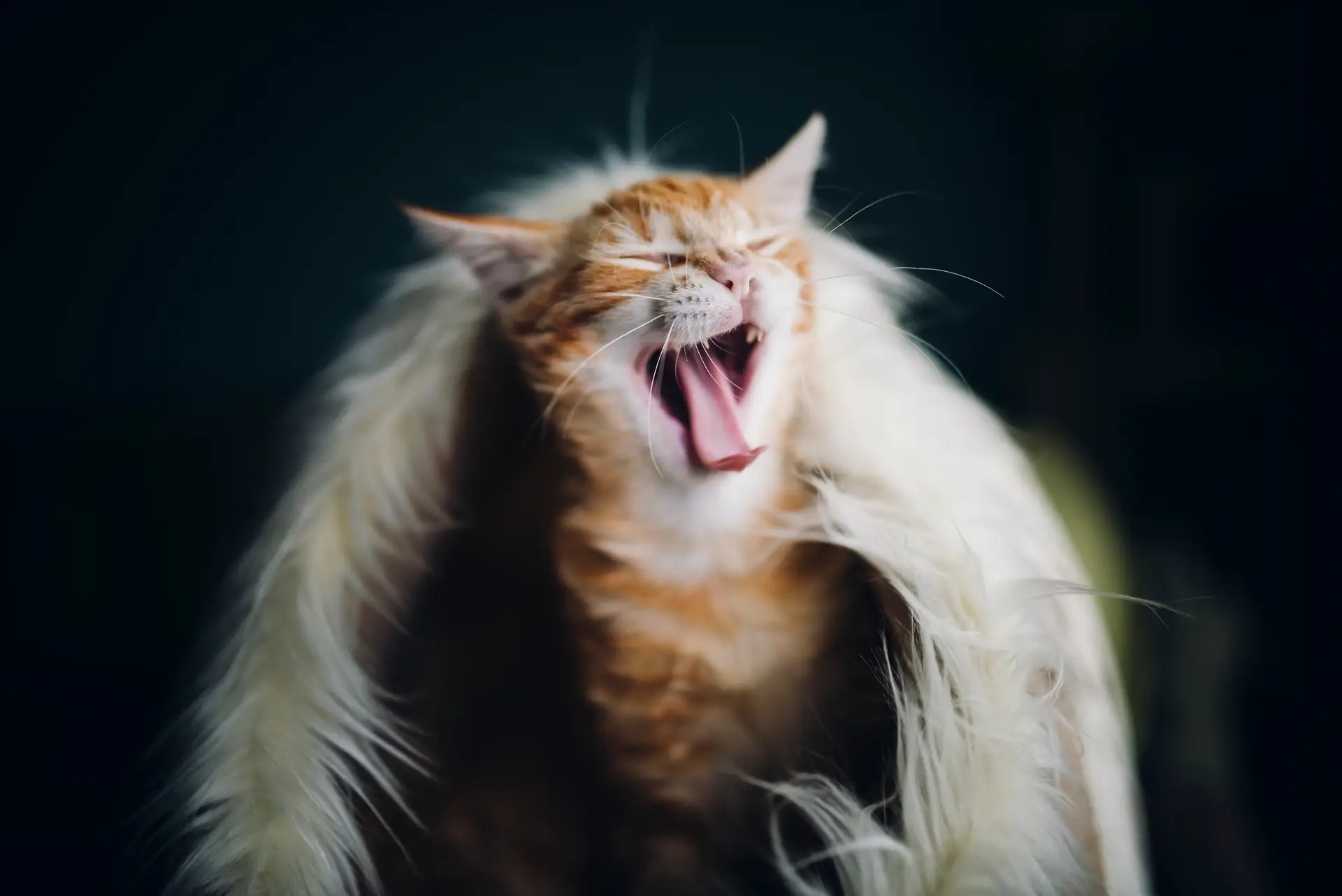
Your feline friend carrying a toy in their mouth and meowing is not merely about playtime. It serves as a heartwarming display of their love, affection, and trust towards you. In fact, this behavior often signifies their longing for your attention and affection. They communicate their sentiments by saying, “Hey, look at me! I love you, and I trust you.”
However, this behavior isn’t always just about expressing love. Sometimes, it might be our feline friends’ way of signaling that they’re feeling lonely or bored. Yes, cats get bored too! Like us humans, they also crave interaction. When they carry a toy and yowl, it often indicates that they want to spend time with you rather than play with the toy itself. So, next time you see your kitten carrying around their favorite toy and meowing, it might just be their way of asking for some quality time with you.
Attention-Seeking Behavior
Some cats have a flair for the dramatic, especially when it comes to getting your attention. Picture this: your cat finds their favorite toy, picks it up in their mouth, and then meows loudly, possibly from another room. This behavior is not so much about the toy but about you. It’s your cat’s way of saying, “Hey, I’m here! Come and interact with me!”.
Cats might carry toys and meow to display their affection or to share a comfort object for attention and interaction. At times, they might be flaunting their ‘catch’, in quest of praise and acknowledgment from you. Much like a child parading their artwork, your cat might offer you their cherished toy as a trophy, implying, “Look what I’ve got! Aren’t you proud of me?”
Desire for Physical Contact
Now, let’s turn our attention to another fascinating aspect of this behavior. Have you ever noticed your cat dropping a toy at your feet and meowing, only to walk away when you toss the toy for a game of fetch? This behavior might leave you scratching your head, but there’s a simple explanation: your cat may not be seeking playtime at all.
When a cat drops a toy and meows but does not engage in play, it could indicate they want you to notice them and may desire physical contact like being petted instead of playing. It’s a bit like their way of saying, “Hey, I’m here! How about some cuddles?” So, next time your cat brings you a toy and starts meowing, try giving them a good petting session. You might just make their day!
Displaying Hunting Instincts
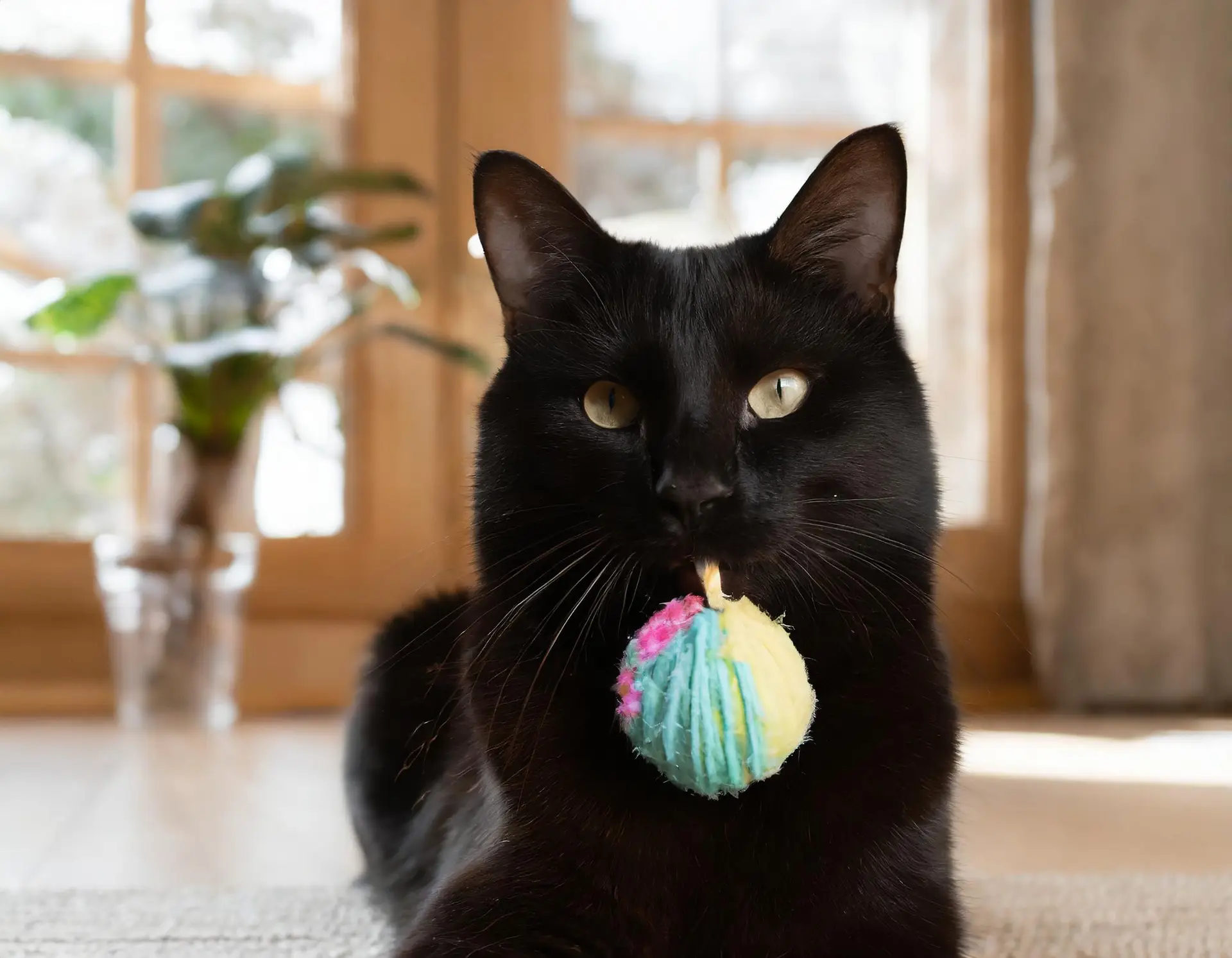
Cats are natural hunters, a trait they’ve inherited from their wild ancestors. Even in the cozy confines of our homes, these hunting instincts can come to the fore in surprising ways. One of these is when your cat carries a toy in their mouth and meows, behaving as if they’ve caught a real prey. It might seem amusing to us, but for our furry friends, it’s serious business.
Carrying around a carrying toy and yowling, particularly at night, might be your cat’s way of engaging in imaginary hunting and announcing their ‘trophy kill’. It’s a glimpse into their wild side, a side that is often hidden in their day-to-day life as a pampered pet. So, when your cat meows while carrying a toy, they might be declaring their catch, showcasing their inherent hunting instincts.
Mimicking Prey Capture
Imagine a small mouse scurrying across your living room floor, your cat giving chase, and then, the triumphant meow as they capture their prey. Now replace the mouse with one of those toy mice, and you have a classic scenario of a cat mimicking prey capture, similar to a dead mouse. Cats carrying toys in their mouth and shifting them around is a behavior that closely mirrors how they would interact with a real prey or a litter of kittens.
When your cat captures a toy, they may meow to announce this success, mimicking their hunting behavior. This not only satisfies their instinctual need to hunt but also lets them show off their ‘treasure’ to you. After all, who wouldn’t want to show off their hunting prowess? Plus, this engagement with toys can help maintain their mental and physical agility, improving their motor skills and overall health.
So, a little playtime can go a long way in keeping your feline friend happy and healthy, especially for cat owners with a furry tail toy!
Teaching Hunting Skills
But wait, there’s more to this behavior than just mimicking prey capture. Cats carrying toys and meowing can also be a way for them to adopt the role of a mother cat teaching her kittens how to hunt. Yes, you heard that right! Your cat might be trying to teach you the art of catching prey.
Various theories suggest that cats carry toys and meow to impart hunting nuances to other household animals or even their human owners. It can be likened to a feline hunting tutorial, where the toy acts as the ‘prey.’
The maternal instinct of a female cat can manifest in her carrying a toy and meowing to communicate how to recognize and deal with prey, effectively teaching hunting skills to her offspring. So, next time your cat brings you a toy and starts meowing, pay attention. You might just learn a thing or two about how to hunt mother cats!
Motherly Behavior in Cats
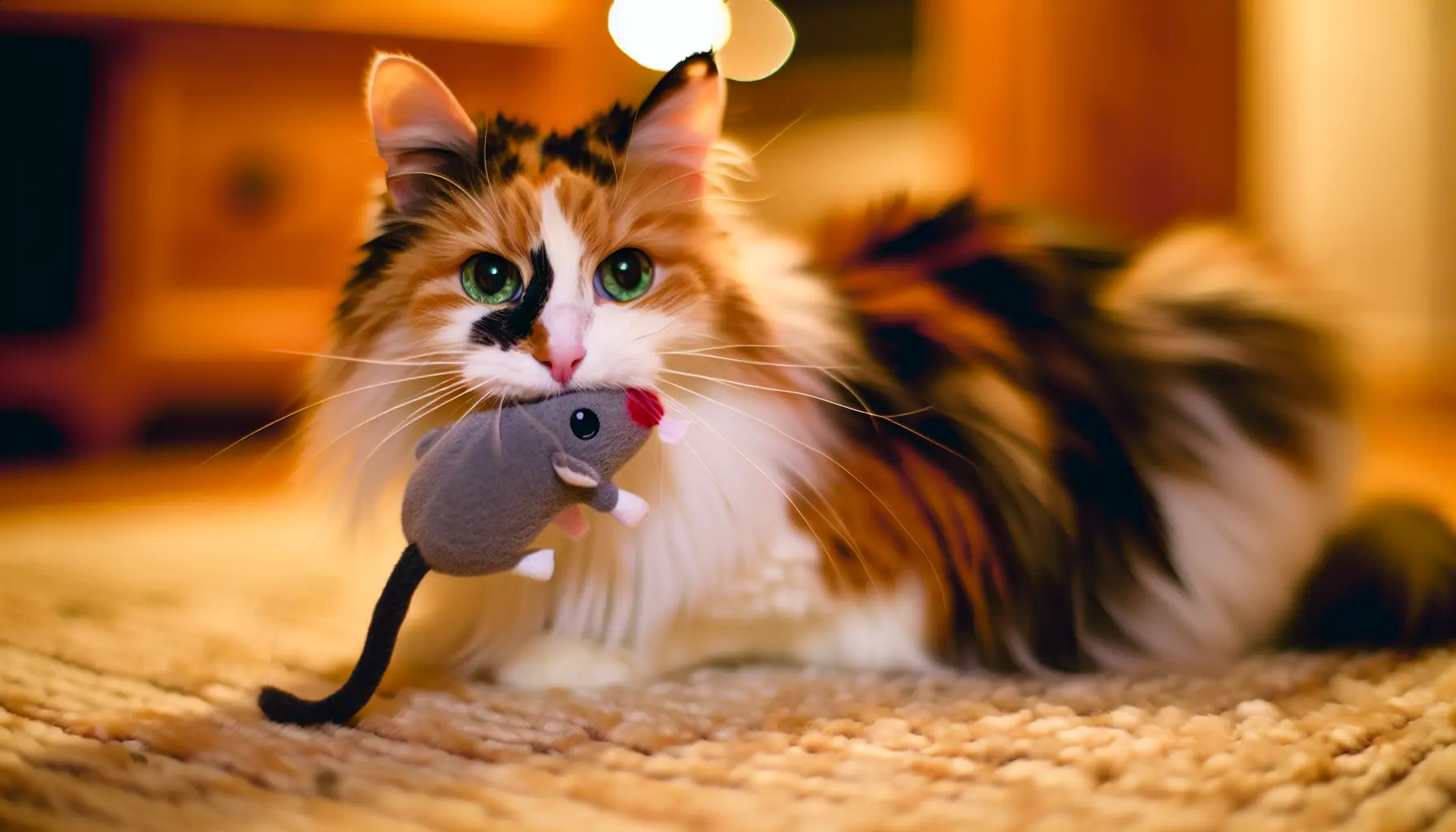
From expressing affection to mimicking hunting behavior, there’s a lot that cats communicate through their toys and meows. But there’s another fascinating aspect we haven’t touched upon yet – motherly behavior. Female cats may carry around toys and meow as a manifestation of their motherly instincts, even if they’ve never had a litter.
It’s not just about the maternal instinct, though. This behavior can also signify a cat’s emotional attachment and affection toward the toy, similar to a comfort object for children. And guess what? It’s not just female cats who display this behavior. Male cats can also show similar parenting behaviors, including protective instincts and carrying toys while vocalizing.
So, if you’ve ever wondered why your male cat behaves like a ‘mother,’ now you know!
Female Cats and Maternal Instincts
Now, let’s delve a bit deeper into the maternal instincts displayed by female cats. Even if a female cat has been spayed, which involves the removal of reproductive organs, they can still display motherly behaviors. This is a testament to the strength of their innate motherly instinct.
A strong bond can be formed between female cats and toys, similar to their own offspring. This includes nurturing behaviors such as grooming and protective actions. A lingering instinct in domestic cats to relocate their kittens to safe grounds might lead them to carry toys in their mouth while meowing, emulating skills they would pass on to their young. Thus, a female cat carrying around a toy and meowing could be exhibiting her maternal instincts.
Male Cats and Parental Behaviors
But what about male cats? Interestingly, they too can exhibit behaviors that are similar to parenting. Male cats can show protective behaviors towards their mates and litters, indicating the presence of a nurturing side that can be extended to objects like toys. It might be surprising, but male cats can be quite the doting ‘parents’ too!
Vocalization while carrying toys might be a manifestation of a male cat’s teaching behavior, akin to how mother cats educate their kittens about hunting. Therefore, a male cat carrying a toy and meowing should not be hastily dismissed as simple play. It could be a display of his parenting skills!
Playtime and Bonding
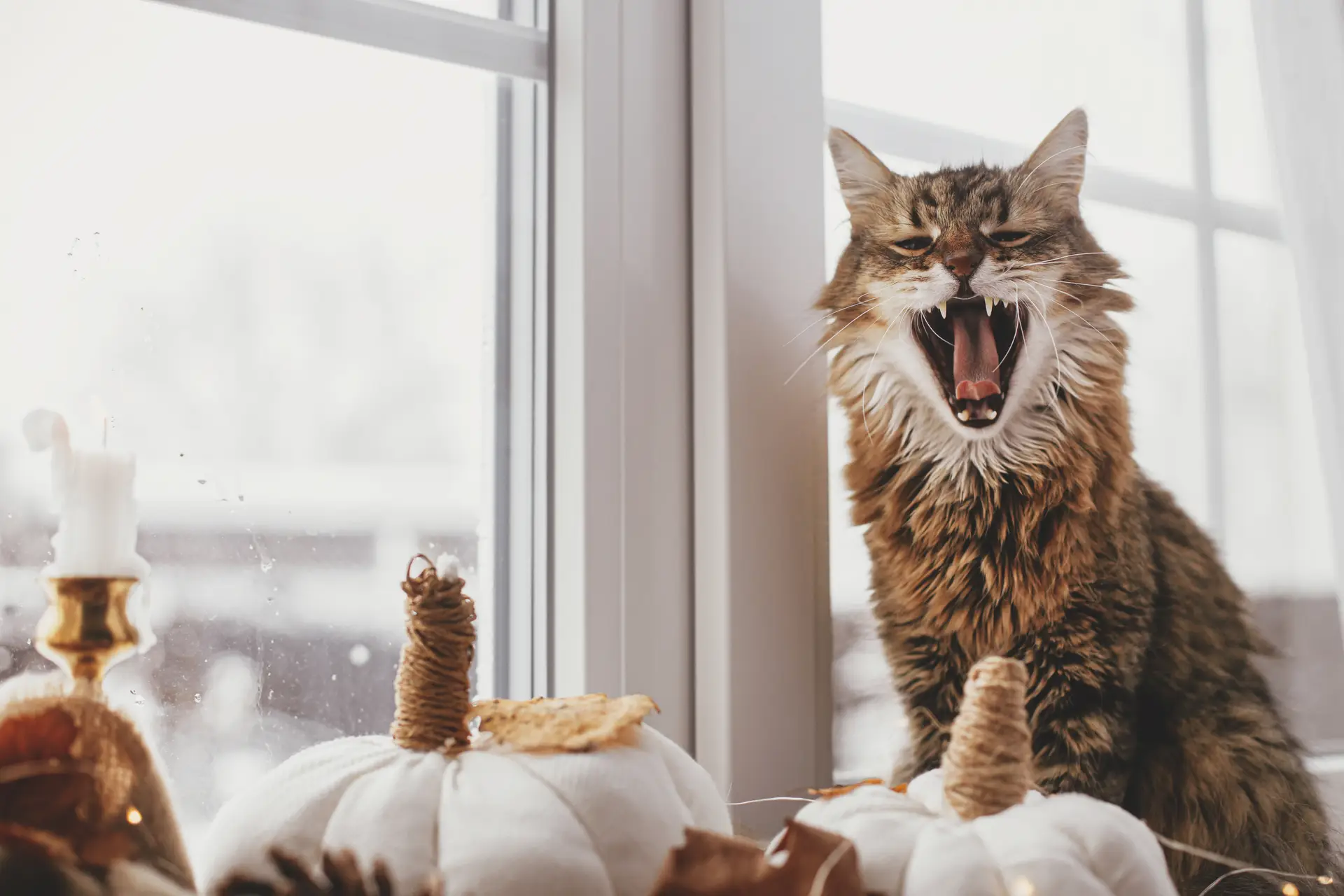
Now that we’ve explored some of the deeper meanings behind cats carrying toys and meowing, let’s shift our focus to something a bit more straightforward – playtime and bonding. Cats, like any other pets, enjoy playtime. It’s a time for them to let loose, burn off some energy, and engage with their favorite human – you!
Regular play sessions are important for cats as they can help them stay happy and healthy. Playing regularly can also provide mental stimulation for cats, keeping them engaged and active. Playing with your cat provides mental stimulation and prevents boredom, particularly for cats that live indoors. Plus, understanding your cat’s specific likes and dislikes in play helps create better playtime experiences and strengthens the bond between the cat and its owner. Some benefits of regular play sessions for cats include:
Keeping them physically fit and maintaining a healthy weight
Reducing the risk of behavioral problems
Providing an outlet for their natural hunting instincts
Promoting socialization and confidence
Preventing destructive behavior
Make sure to set aside dedicated playtime each day to keep your cat happy and healthy.
So, when your cat carries a toy in their mouth and meows, they might just be initiating a fun playtime session with you!
Initiating Playtime
So how exactly do cats initiate playtime? Cats often use meowing as an audible cue in conjunction with bringing a toy to communicate their desire to engage in playtime with their owners. It’s like their way of saying, “Hey, let’s play! I’ve got my favorite toy, and I’m ready to go!”
To indicate they are ready to play, cats may show behaviors such as:
Spontaneous play with objects
Erratic movements
A focused gaze
A stalking posture
Increased energy, which may be accompanied by bringing a toy and vocalizing
Many cat owners with multiple pets in their households find that providing individual playtime for each cat, including other cats, can help prevent competitive behaviors and the need for a cat to excessively meow and carry toys as a bid for individual attention.
So, the next time your cat comes meowing with one of their favorite toys, like a stuffed animal or a stuffed toy, in their mouth, why not indulge them in a quick play session?
Strengthening the Bond
Playtime isn’t just about fun and games. It’s also a precious bonding time between you and your feline friend. Interactive playtime activities, such as using wand toys or engaging in fetch games, enable cats to express their natural hunting behaviors and strengthen the bond with their owners.
Regularly scheduled playtimes that align with a cat’s natural activity patterns are crucial for building a stronger relationship between the cat and its human companion. And remember, it’s not just about the play. Sometimes, your cat might carry a damaged toy and meow not to play, but to get your attention. In such cases, engaging in play rather than scolding the cat can support their bond.
So, let’s embrace these playful moments with our furry friends and use them to strengthen our bond with them. Featured image credit goes to the talented photographer who captured this heartwarming scene.
Dealing with Repetitive or Excessive Meowing
While it’s charming to see our cats carrying a toy and meowing, it can sometimes become repetitive or excessive, leading to a noisy environment. Dealing with this behavior requires understanding the context of the cat’s meowing and avoiding reinforcing the behavior. After all, if we immediately react to their excessive meows, we might inadvertently encourage them to continue the behavior.
Persistently ignoring the cat’s vocal demands, even when the cat escalates its efforts, can train the cat that meowing is not an efficient method to garner attention. Ensuring your cat has a clean litter box at bedtime and sufficient food and water can fulfill their physical needs and aid in curbing excessive meowing during the night.
Providing Mental Stimulation
Providing mental stimulation for your cat is an effective way to deal with excessive meowing. The introduction of new interactive toys, such as battery-operated ones, watching Cat TV videos on Youtube and puzzle feeders can offer mental stimulation and serve as an outlet for your cat’s emotions, helping reduce vocalization.
A homemade food puzzle can boost your cat’s mental activity and help regulate their sleep-wake cycles, reducing nighttime meowing. And remember, if your cat persistently meows with a toy designed to hold snacks or catnip, it could be a cue for you to refill it, catering to your cat’s craving for food-based stimulation.
Ensuring Proper Socialization
Apart from mental stimulation, proper socialization is also crucial to deal with repetitive or excessive meowing. Regular interactive play sessions with humans and safe exposure to other animals can enhance a cat’s social behavior, reducing the likelihood of them displaying attention-seeking behaviors.
Environmental enrichment like scratching posts, window perches, and safe outdoor spaces or catios, can help indoor cats exercise their natural behaviors and prevent attention-seeking actions. So, ensure your indoor cat gets plenty of social interaction and environmental enrichment to keep those excessive meows at bay.
Summary
As we’ve seen throughout this blog post, cats meowing with a toy in their mouth can mean a multitude of things. From seeking attention and affection, displaying hunting instincts, expressing motherly behavior, initiating playtime, to even teaching us a thing or two about hunting – their behavior is a rich tapestry of communication and expression.
Understanding these behaviors can not only help us provide a better environment for our feline friends but also deepen our bond with them. After all, isn’t that what being a pet parent is all about – understanding, caring for, and bonding with our pets? So, the next time your cat comes meowing with a toy in their mouth, remember, they’re not just playing; they’re communicating with you in their own special way.
Frequently Asked Questions
Why does my cat meow while holding a toy in his mouth?
Your cat meows while holding a toy in his mouth to get your attention and show off his treasure. It’s a way for him to engage in play and seek mental and physical stimulation.
Why does my cat bite his toy and meow?
Your cat is likely seeking your attention and wants you to play or watch him play with the toy to receive praise and attention. Cats, especially when they’re young, enjoy interacting and getting attention from their owners.
What does it mean when a cat brings you a toy and meows?
When a cat brings you a toy and meows, it usually means that they are seeking your attention and are inviting you to play with them. This behavior is a way for cats to show their desire for interaction and playtime.
Can male cats also display motherly behavior?
Yes, male cats can show motherly behavior, such as being protective and carrying toys while vocalizing. This behavior is not exclusive to female cats.
Can playtime help strengthen my bond with my cat?
Absolutely! Playing with your cat is one of the best ways to build a stronger bond with them. It also provides mental stimulation and prevents boredom. Try setting aside some playtime with your cat regularly.
